




Each year we proudly honour all those who have played an important role in defending our freedoms and way of life by coming together. This poignant time unites us as a school and a global community, and we can take great comfort from these shared acts of remembrance as we allow ourselves time for selfreflection and to pay tribute to the fallen.
The First World War took the lives of an estimated 16 million soldiers and civilians, and the Second World War a staggering 60 million. This is not to mention the many millions left physically and psychologically wounded, in numbers that are almost incomprehensible.
Whilst these numbers alone are shocking, behind every statistic is an individual story - that of someone’s son, someone’s brother, someone’s friend.
Around 10 years ago, we began a tradition at school where names of the fallen old Bedfordians who fought in the First World War, of which there are 497, are read out by the Head Master during our Remembrance assembly. The names are taken from the memorial book ‘There Honour Comes’, which sits in a glass presentation box underneath the memorial wall in our Memorial Hall. It was compiled, researched and written by retired couple Beryl and Stuart Blythe, who set out in the mid-1990s to find the full names, ranks, regiments, dates and places of death of all Old Bedfordians inscribed on this wall.
In doing so, Mr and Mrs Blythe became incredibly invested as they uncovered every soldier’s story. As quoted in their introduction to the book, “We feel as if we know these Bedford School men personally. There are no ghosts in war cemeteries, in fact we feel a sort of quiet friendliness and a welcome in them, especially those in which we have Old Bedfordians buried and where we are able to visit them quietly on our own.”
The names which are read out are simply chosen in alphabetical order, as they appear in the book, and today we start reading from the letter ‘T’.
This booklet provides the stories of five of the fallen Old Bedfordians whose names are being read out this year. The words you will read on the following pages have been taken directly from There Honour Comes and we hope that by telling these stories, they will resonate with us and help provide a pathway to understanding the horror and suffering caused by war, as well as keeping these individuals’ memories alive and ensuring that their sacrifices were not in vain.


Born: 26 November 1897 School years: 1910 - 1914
Died: Killed accidentally whilst flying on 17 March 1918
Buried: Aubigny Communal Cemetery Extension, France (Aubigny-en-Artois) Plot 6 Row J Grave 13
Old Bedfordian Osborne George Tancock joined the Royal Military Academy Woolwich, straight from school, in December 1914. He was commissioned in July 1915 and Mentioned in Dispatches (MID) in 1916. He was promoted to Lieutenant in June 1917 and awarded the Military Cross (MC) in the New Year’s Honours List in January 1918.
On 18 November 1916, Lieut. Tancock left his unit in France and was admitted to hospital suffering
from pyrexia of unknown origin and rheumatic pain. His condition improved after a few days, and he was evacuated to the UK via Le Havre/Southampton on the SS Gurkha. He went to the 3rd Southern General Hospital, Oxford, and was granted home leave from 26 November 1916 to 1 January 1917. He reported to a medical board in Bedford on 10 January complaining of myalgia and pain in his back and was given a further two months’ leave. On 2 March 1917, he went before a medical board at a military hospital in Edinburgh and was found fit for general service.
He went back to France on 8 May 1917 and was posted to ‘D’ Battery in the field. On 9 July, he became acting
captain, took UK leave from 13 to 23 September 1917 and relinquished his acting rank on 29 September 1917. He subsequently offered his services as an observer in the Royal Flying Corps.
On 13 October 1917 he was admitted to hospital with an injury to his right knee sustained during a game of rugby at Nieuport, Belgium. He slipped sharply and suffered a dislocation of the knee and synovitis. He was evacuated to the UK on the Princess Elizabeth and was admitted to the Central Military Hospital for Officers in Brighton. By 17 December he was said to have recovered completely but managed to “crock his knee up” again whilst at home for
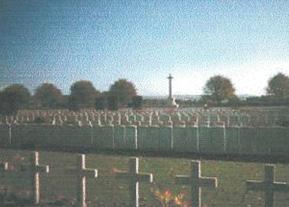
Christmas leave.
He wrote to the War Office from his bed at home in Little Waltham, Chelmsford on 29 December informing them he was laid up and could not report for observer training as requested. He finally reported at the Royal Flying Corps School at Hursley Park, Winchester on 21 January 1918.
It was his mother who received the telegram informing of his death on 20 March 1918. Mrs Tancock asked the War Office to pay his outstanding balances to her, but the Financial Secretary replied that this money could only be paid to her husband, as her son’s legal next-of-kin.
Lieut. Tancock was the son of Colonel Osbourne Kendall Tancock CMG (late Royal Artillery) and Theodosia Louise Tancock (nee Hartnell) of 51 Goldington Avenue, Bedford, who chose for his headstone the inscription Via Crucis Via Lucis (The way of the cross is the way of light). He had a sister, Dorothy Kendall Tancock, and a brother, Edward Bernard Tancock, who were aged 23 and 16 respectively when he was killed aged 20.
There is a memorial for OG Tancock in the School Chapel and his name is also shown on the 1st WW memorial boards both in St. Andrew’s Church and St. Peter’s Church, Bedford.
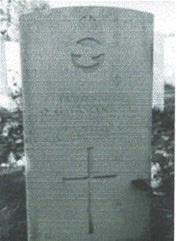

Old Bedfordian Lieutenant and Adjutant Aubrey Lloyd Sinclair Thomson MC joined the Public Schools Battalion in 1914 and, after he was commissioned in April 1915, went to French Flanders. He gained his MC during the Battle of Loos in September 1915 and was recommended for the Victoria Cross (VC) for his heroic actions at the Hohenzollern Redoubt (Loos).
On 10 August 1917, the 1st King’s Liverpools were in billets in Gorre, and the unit diary states that Lieut. A. L. S. Thomson MC re-joined the unit for duty (the reason for his absence was not stated). During the night of 15 August, in heavy rain, they relieved the 2nd Battalion South Staffordshires on the front line.
The bad weather continued for the next two days, while the battalion worked on improving their trenches. On 18 August, Lieut. A. L. S. Thomson

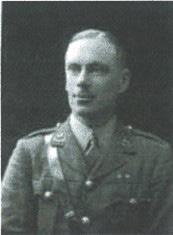
Born: 22 September 1891 Bedford School years: 1902-1910
Died: Of wounds in a Manchester military hospital on 14 November 1917 Buried: Blockley Cemetery, Worcestershire
Old Bedfordian Osborne George Tancock joined the Royal Military Academy Woolwich, straight from school, in December 1914. He was commissioned in July 1915 and MID in 1916. He was promoted to Lieutenant in June 1917 and awarded the Military Cross in the New Year’s Honours List in January 1918.
MC was wounded, together with 10 other ranks.
For the two days following, the line was unusually quiet, with only one other rank being wounded. During the night of 21 August, in heavy
thunderstorms, the battalion was relieved by the 2nd South Staffordshires and moved into support in the village of Givenchy. It was here that Lieut. A. L. S. Thomson MC sustained the injuries that would eventually go on to kill him some three months later.
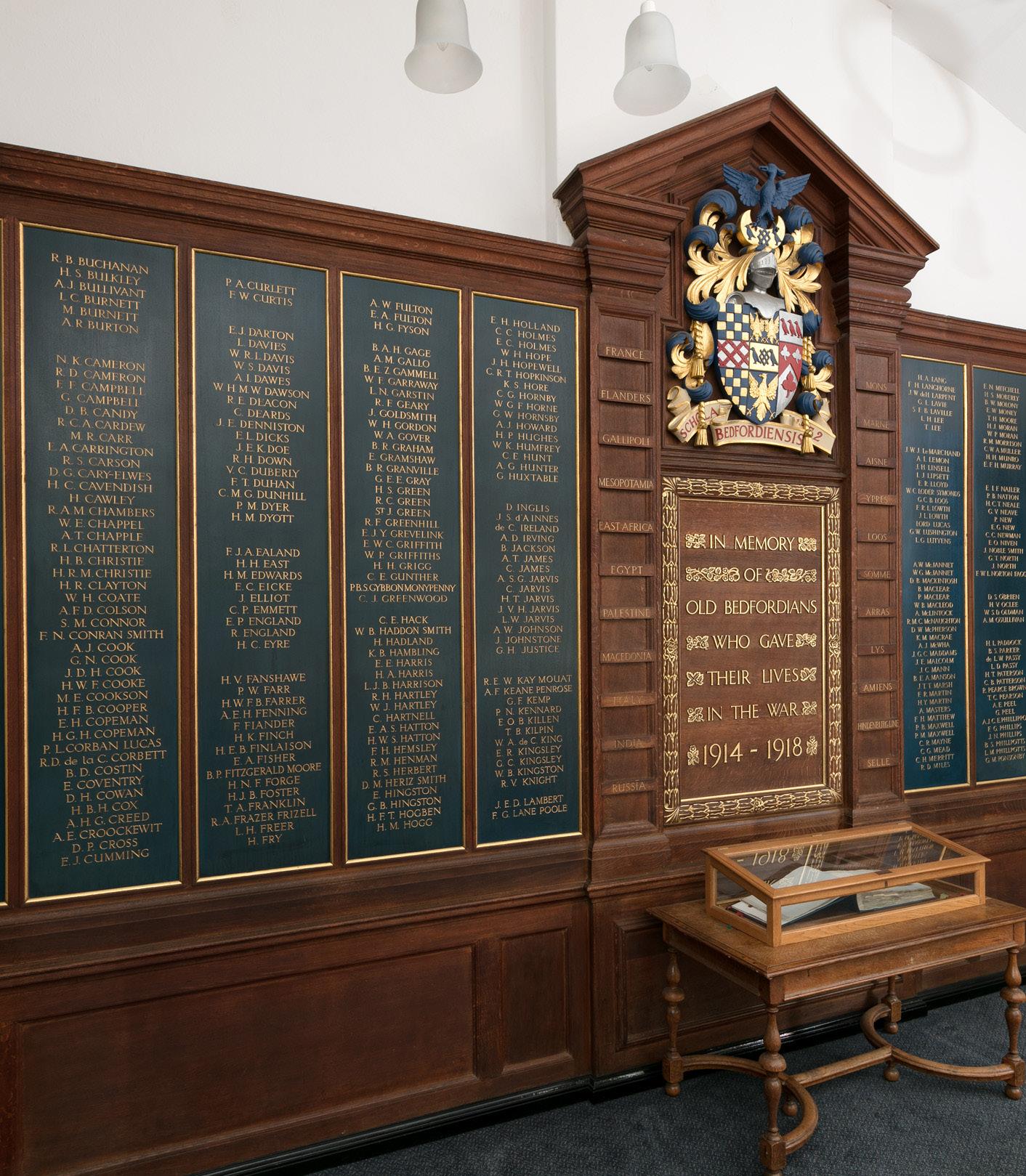
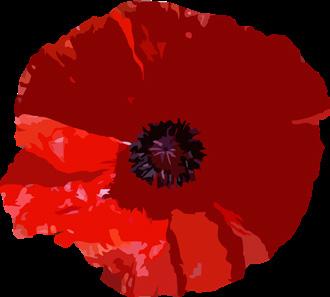
Born: 9 October 1893 School years: 1901 - 1913 Died: Killed in action on 8 August 1916 Buried: No known grave but is commemorated on the Memorial to the Missing, (Somme) Thiepval, France. (Aubigny-en-Artois) Plot 6 Row J Grave 13
In July 1914, Old Bedfordian Lieutenant John Tisdall had just completed his first year at Peterhouse College, Cambridge, to which he had gained a ‘classical’ scholarship. He also gained the ‘Bell’ university scholarship and was a ‘Double Blue’ for football and rowing. He applied to join King Edward’s Horse (Territorial Force) on 16 October 1913, stating that his paternal grandfather had served in the Indian Army and at one time
was the Governor of the garrison at Auckland, New Zealand. He stated that his father had been educated in New Zealand until he was 23 and was then in India until he was 35. His mother was born in India and he himself was born in Persia and lived there for seven years. He also lived in Egypt and Malta until his family returned to the UK. He stated that he had served for three years in Bedford School Officer Training Corp (OTC).

When war broke out, Lieut. J.T. Tisdall was mobilised in King Edward’s Horse Regiment. On 12 September 1914, he applied for an appointment to the Special Reserve of Officers stating a preference for the 3rd Battalion King’s Liverpool Regiment, and he was subsequently commissioned on 1 October 1914 in the 1st Battalion King’s Liverpools. He went to Belgium on 7 October 1914 and was wounded quite severely in the knee near Ypres later in that year, but returned to his unit as soon as possible at his own request. He was nominated for the Royal Military College Sandhurst in January 1915 for a short course. He returned to his own unit on 19 February 1916 and was promoted to Lieutenant on 1 July 1916.
On the 8 August 1916, Lieut. Tisdall’s unit, part of the 6th Brigade, advanced eastward, north if the railway line and three comanies reached Guillemont Station near Albert. However, a fourth company found that the Germans had
reoccupied their front line and could not be dislodged. The 17th Battalion Middlesex Regiment attacked from Waterlot Farm but could not link up with the 1st Battalion King’s Liverpools and a nasty situation developed during which Lieut. Tisdall was killed.
He was reported missing on 8 August 1916, but his death was not officially confirmed until 19 April 1917, after his father had received a confirming letter from the International Red Cross at Geneva. This included five statements all made by members of the 1st Battalion King’s Liverpool Regiment who were prisoners of war.


John was the younger brother of Sub-Lieut. Arthur Walderne St. C. Tisdall VC, RNVR. They had a younger brother, Capt. Edward Gordon St Clair Tisdall MC, 1st Monmouthshire Regiment, who was dangerously wounded in 1918 in the Hindenburg Line near the St. Quentin Canal, France. He was in hospital in Rouen for five weeks where his parents were able to visit him. He fortunately recovered.
All three boys were pupils at Bedford School and there is a family plaque in memory of the brothers in the School Chapel.
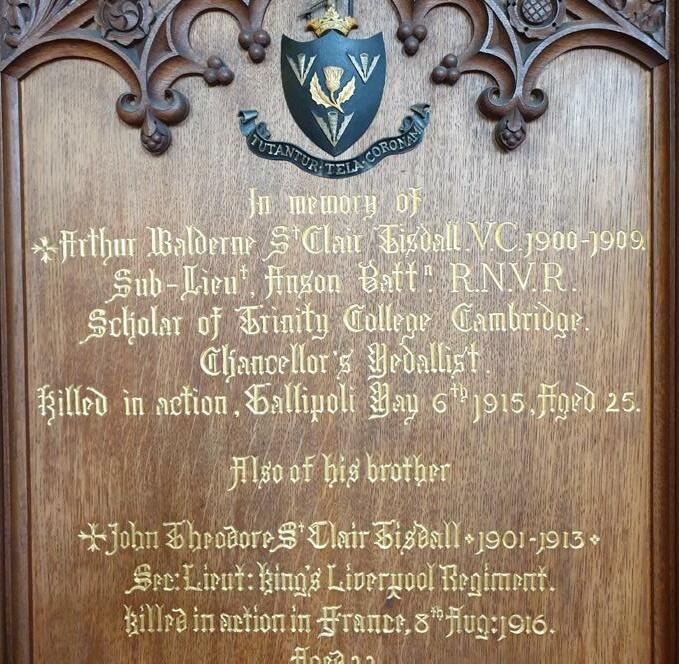
 SELBY TUPPEN
SELBY TUPPEN
Born: 8 December 1894
School years: 1908 - 1913 Died: When his ship was torpedoed on 5 October 1918
Buried: He is commemorated on the Tower Hill Memorial to the Missing of the Mercantile Marine, London.
After finishing Bedford School in 1913, Old Bedfordian Senior Wireless Operator Claud Christopher Selby Tuppen His Majesty’s Troopship (HMT) attended the Royal Military College Sandhurst and gained a commission in 1914, but this was withheld due to a serious lung haemorrhage he suffered whilst at the college. He made two abortive appeals to the War Office, but a medical board confirmed this decision.

He qualified as a Marconi Wireless Operator in 1915, went to sea in that capacity in May 1916 serving
on SS Meseba and SS Rath in the Atlantic for 19 months ferrying war material. He remained at sea up to the time of his death.
Claud Tuppen’s mother had died by 1911, but his father, Dr Claud Ernest Tuppen, lived at 4 Albert Terrace, Bedford when his son was at school. A younger brother John Stacey Selby Tuppen was also at Bedford School but was too young to serve in the First World War.
Claud Tuppen died aboard HMT Reventazon, a 4,000-ton British registered steamer owned by Elders & Fyffes, when she was torpedoed by a submarine abreast of Kassandra Point in the Gulf of Salonika.
He has a memorial in the School Chapel and his name is also shown on Blunham village war memorial, Bedfordshire.
Born: 2 March 1898 School years: 1908-1915
Died: Killed in action on 11 September 1916


Buried: No known grave but is commemorated on the Royal Flying Corps/Royal Air Force Memorial to the Missing at Faubourg, d’ Amiens, Arras, France.
Old Bedfordian Second Lieutenant Leslie Geoffrey (correctly Gottfried) Harcourt Vernon MC went directly from Bedford School to the Royal Military College Sandhurst in June 1915 and was commissioned into the Royal Welsh Fusiliers in January 1916.
When he was at school, his parents Mr & Mrs C. Vernon lived in Wellington House, Apollo Rumder, Bombay, India. He had a younger brother at Bedford School
with him, Jonathan William Cecil Vernon (born 8 October 1900), who served as a second lieutenant in the Northumberland Fusiliers and survived the war.
On 11 September 1916, Sec. Lieut. Vernon, with 23 Squadron Royal Flying Corps, was flying an Farman Experimental 2b from their airfield at Vert Galand on an offensive patrol in formation with Second Lieutenant J. G. Firbank as observer. As they dived on enemy aircraft, Vernon and his crewman were killed in the resulting melee.
Both officers were buried by German troops, the graves being lost in fighting over this ground later in the war.
Sec. Lieut. Vernon was awarded the MC posthumously in July 1917.
How sleep the brave, who sink to rest
By all their country's wishes blest!
When Spring, with dewy fingers cold, Returns to deck their hallow'd mould, She there shall dress a sweeter sod Than Fancy's feet have ever trod.
By fairy hands their knell is rung;

By forms unseen their dirge is sung; There Honour comes, a pilgrim grey, To bless the turf that wraps their clay; And Freedom shall awhile repair To dwell, a weeping hermit, there!
Collins 1721-1759
Poem taken from the book ‘There Honour Comes’, chosen by the authors Beryl and Stuart Blythe. Two lines from this poem were chosen by the family of OB William Hayhurst Hope for the inscription on the headstone over his grave in Porte-de-Paris Cemetery, Cambrai, France.
William